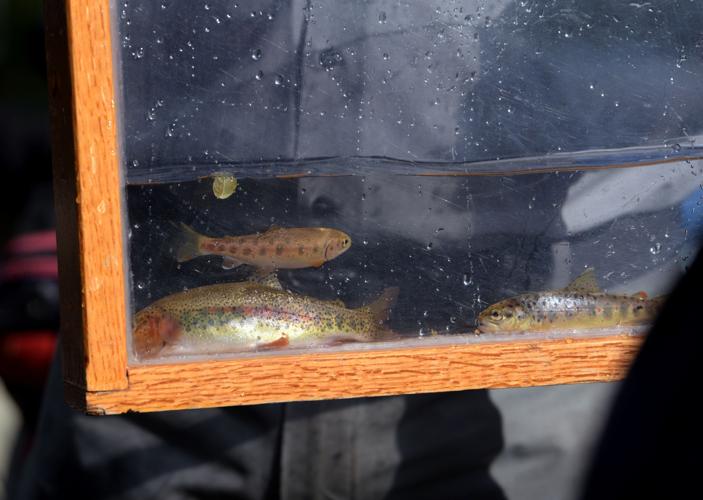During a trout release on Wednesday, May 11 in the Salmon Creek at Salt Point, students from TST BOCES Turning Point program were in for a special treat when we discovered a pond filled with breeding toads.
In the Springtime, male and female toads gather in large numbers to breed in small bodies of water with very little movement like ponds, marshes and ditches, which is just what students from Sarah Kunz' class were able to witness first-hand.
In the mating position of toads, called amplexus, the male toad clasps to the female's back and the pair swims around as the female, filled with eggs, selects a site for depositing them.
Toad eggs are distinguishable from frog eggs because toads lay eggs in long jelly-like strings while frogs lay eggs in a large cluster. Females expel several thousand eggs, with the capacity of releasing up to 30,000 eggs. Males fertilize the egg with their sperm through the amplexus position.
The jelly surrounding the eggs swell in the water until each egg is covered with a thick coating. The coating allows the eggs to float to the surface of the water where there is more oxygen for the eggs to survive.
In a few days, a tadpole will hatch from each fertilized egg and over the course of four to six weeks, the tadpole will go through three stages of development- growing longer, growing a body and tail, then absorbing the tail and growing limbs before finally metamorphosing into a small toad.
Young toads will leave the pond they lived in as tadpoles and may only return to breed again later on.








